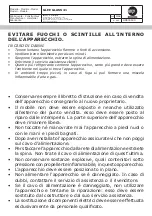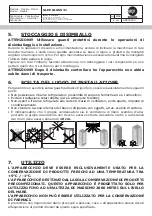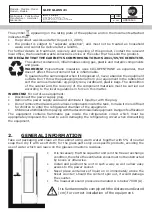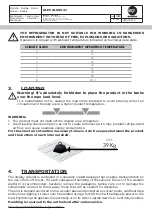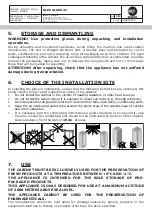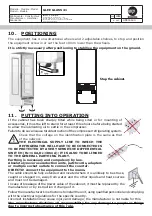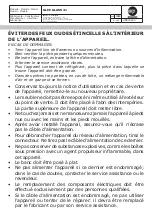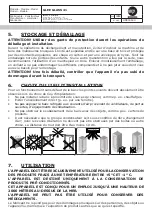
Modello - Modèle - Model
Modell - Modelo
GLEE GLASS 41
Fabbricante - Constructeur
Manufacturer - Hersteller
Fabricante
EPTA S.p.A. - Sede legale
Via Mecenate, 86 - 20138 Milano – Italy
Capitale € 68.515.000 - R.E.A./MI – 1730229
Registro delle Imprese e Cod.Fiscale n. 04160730968
Partita IVA 04160730968
PAGE
17/68
N° DOC
UM000500
INTRODUCTION
This manual was drafted in a simple and rational manner to allow you to fully understand your
equipment. You are advised to read the content carefully and keep it with the equipment.
The manufacturer cannot be held in any way liable for damage caused to people or property
due to non-compliance with warnings contained in this manual.
Anyone using this equipment should read this user manual.
All uses of the unit NOT specified in this manual are prohibited.
• The appliance may be used by children of not less than 8
years old, and by persons with reduced physical, sensory
or mental capabilities, by those with no experience or
the necessary knowledge, as long as they are under
supervision, or after they have received instruction on the
safe use of the appliance and of the dangers associated
with it. Children must not play with the appliance.
Cleaning and maintenance carried out by the user must
not be carried out by children without supervision.
1.
ENVIRONMENTAL PROTECTION AND REQUIREMENTS
FOR WASTE DISPOSAL AND TREATMENT
IMPORTANT INFORMATION FOR CORRECT DISPOSAL OF THE PRODUCT IN
ACCORDANCE WITH EC DIRECTIVE 2012/19/UE
For reasons connected with the safeguard of the environment, and in compliance with what
Directive 2011/65/EC and the relevant local national laws that establish, the cabinets for
refrigerated products and frozens must be disposed of and recycled at the end of their life cycle.
Making sure that this is achieved, the user significantly helps prevent potential repercussions
on the environment and on the public health. Cabinets including a refrigerating circuit and a
power plug (therefore ready to be installed) are defined WEEE: “Waste Electrical and Electronic
Equipment”. Certain requirements concerning their treatment at the end of their life cycle must
therefore be complied with:
•
Deliver the cabinets to the appropriate centres specialising in WEEE recovery and recycling.
•
Alternatively, return the cabinets to the seller or to the manufacturer.
•
At any rate, collection of WEEE to be processed must be made following criteria that
guarantee the protection of the cast-off appliances during transportation and during their
loading and unloading. Do not leave the appliances unattended, not even for a few days.
•
Avoid damaging the refrigeration circuit, as this contains fluids that may potentialy be
hazardous for the environment and are subject to special prescriptions.
•
Make sure that doors are closed and fasten mobile parts accordingly.
•
Remove the power plug from the cast-off appliances and cut off their power cord in order
for them to become unusable.


